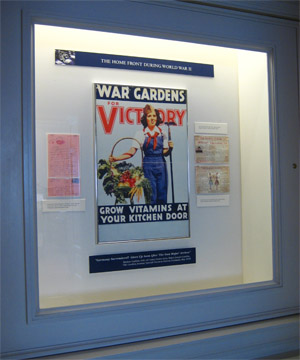Evaluation of Storage Materials
Background: The Library of Congress has a quality assurance program that tests materials that come into contact with collections in storage or display. These tests assure that storage and display materials will not contaminate collections or cause other harm. The Oddy test assesses the impact of off-gassing on collection items being stored or displayed. The Oddy test is performed by placing the material being tested in a sealed glass vial with metal coupons (copper, lead and silver) and water at 60oC for 28 days. A blank of water and coupons alone, without other materials, is also tested. If the tested material visually appears more corroded or oxidized than the blank, then the material normally fails and is not used in an exhibit. This corrosion information is an indicator of whether the off-gas vapors from the materials will cause chemical degradation of a collection item in the same exhibit case or in storage. The Oddy test results are subjective because the coupons are visually examined and rated.
A new project is underway that will develop an improved test that can be substituted for the Oddy test using a gas chromatograph and a mass spectrometer and/or X-Ray fluorescence/diffraction, so that the results are quantifiable and obtained within 2-3 days instead of 28 days. This improved test will analyze off-gasses from collection storage items and oxides formed so that they can be quantified and chemically identified to assess the impact on collection materials. This should improve the care for the collections and identify problems in housing materials more quickly and quantifiably.Contributing Studies:
Green, L and Thickett, D.; “Testing Materials for Use in Storage and Display of An Antiquities – A Revised Method”, Studies in Conservation, 40, (1995), pp. 145-152.
Project Description: This research will measure the volatiles being off-gassed by gas chromatograph-mass spectrometer (GC-MS) in quantitative manner and identify the volatiles. The testing will involve placing the material being tested in a sealed vial and with water at different temperatures with light as a variable. Then a small air sample will be extracted from the vial and analyzed in a GC-MS. The idea is to develop a quick test at elevated temperatures. GC-MS with solid phase microextraction (SPME) will also be considered. This will be an improvement over the Oddy test since it will both quantify and identify volatiles that could adversely impact collection items. The GC-MS test will also be quicker (2-3 days versus 28 days). In addition the chemical analysis of the oxides from Oddy test metal coupons will also be conducted with X-ray fluorescence (XRF) and/or X-ray diffraction (XRD). The XRF/XRD results will replace the visual corrosion observations from the coupons.
Outcome/Findings: An initial test protocol was developed with the GC/MS. Further modification of this GC-MS testing protocol is needed.
Acknowledgements: Deanna Marcum and Robert Dizard provide continuing support to preservation and conservation efforts.
Images: LC exhibit of Home Front during World War II.

